There is a group of about 1,500 winter commuters a day between the Cape and Martha’s Vineyard, and not one of them takes the ferry. They all fly.
The commuters are crows. They leave for the Cape early in the morning and return to the Vineyard around 4 p.m. to spend the night here.
The phenomenon, known among some birders for years, is now the subject of a scientific study that promises to shed light on the reasons for, and effects of, this curious behavior.
As part of the long-term study, Robert A. Culbert, a Vineyard Haven ecologist and respected birder, is collecting data about the migration and the birds’ roosting locations. He hopes to add to a growing cache of information on similar migrations around the world.
He and others posit that after a day of foraging on the Cape, the birds retreat to the Vineyard for rest, relaxation and refuge from their predators, primarily owls, which are more prevalent on the Cape than on the Island.
The fascinating flight can be watched by anyone. On Tuesday afternoon, two bird enthusiasts joined with Mr. Culbert at the East Chop Lighthouse from 4 p.m. to about 4:30 p.m. Looking across Nantucket Sound, they pointed their binoculars towards the Cape and watched as groups of birds in the hundreds approached. Some flew east of East Chop and headed toward Oak Bluffs. Others passed west of East Chop and approached the Martha’s Vineyard Hospital. Mr. Culbert said the birds probably would have flown right overhead if the observers had hidden in their cars.
With similar purpose, at 5 p.m., the ferry Island Home left Vineyard Haven destined for Woods Hole loaded with passengers, some of whom worked on the Vineyard for the day and were headed home for the night. It is a cross-migration of humans and birds headed in different directions.
Kenny Ivory of Edgartown is one of Mr. Culbert’s volunteers and students, who joined the project out of a fascination for the subject and wanting to become a birder. “Those birds are ‘wash-ashores,’” he said, a term to describe people who come to the Vineyard but aren’t from here.
The natural, daily migration of crows from the Cape to the Vineyard is explainable. In the winter, crows gather in the evening to roost. They do it in places where they feel safe, Mr. Culbert said.
Their main roosting place this winter is at the Tradewinds Airport property, a parcel owned by the Martha’s Vineyard Land Bank. The birds converge on this spot from a number of different places. Mr. Culbert said it is possible there is another place on the Vineyard where they are gathering but he has not yet found it.
At the Tradewinds roosting area, the birds’ loud “cawing” defines the space they occupy. Closer to sunset and up close the birds can be watched hopping from pine branch to branch. Some fly overhead. A few seem stationed at the edges of the roost. They look as though they are deliberately watching the activity of hikers and dog walkers nearby and below.
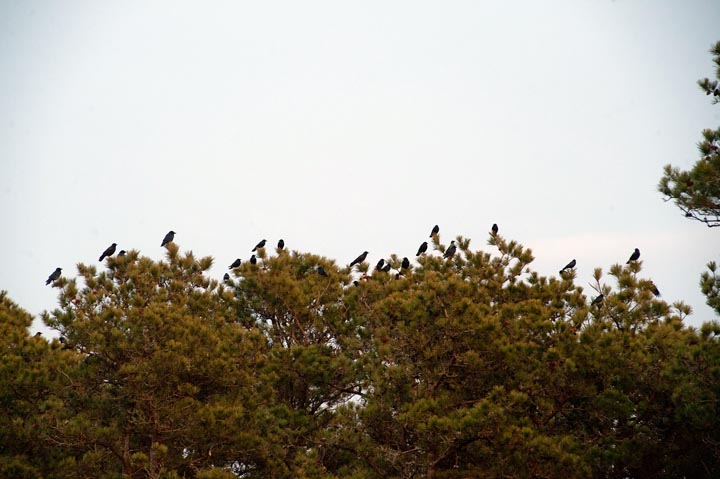
Kevin McGowen, a national authority on crows at the Cornell Lab of Ornithology in Ithaca, said he was not surprised to hear that crows migrate daily to the Vineyard to roost. “They roost all over the place, not just on islands,” he said. He said the phenomenon takes place from October through March. He speculated that the Vineyard might be a fine choice, because the birds aren’t harassed on the Vineyard. There are no foxes or coyotes and few predators. “Islands are typically a place where birds go to get away,” he said.
The Vineyard is a natural haven for the birds, which have been coming here for as long as can be remembered, Mr. Culbert said.
For more than 30 years Mr. Culbert, 56, has been involved in bird studies on the Vineyard. He was among the first to spend time working for the Trustees of Reservations doing surveys of tern colonies on Chappaquiddick. And through the years he has joined with others to study piping plovers, terns and gulls and their annual summer stay on the Vineyard. He and his wife, Wendy, run a consulting land management business with a goal of offering protection to plants and animals.
For several years, Mr. Culbert has taught a class called “Birding 101.” And this fall, it occurred to him to give his new “citizen science” students a project they could get involved in that would have lasting impact. Studying crows behavior in the winter, their numbers, and where they roost seemed a hands-on project. Each student could be put at specific observing places at the end of the day to count and observe, as well as track where the birds are coming from and where they end up.
Every year Mr. Culbert participates in the annual Christmas bird count. The day-long count pulls together a snapshot of birds in this area which over time reveals changing trends, changing weather conditions, changing environment. Environment can impact each of the bird species differently.
The crow environment is changing too. Mr. Culbert said crows may like the Vineyard better now than the Cape because of the more benign predator situation. The great horned owl population is low, though it is rising. Gathering these data will help researchers understand the unique relationships. Mr. Culbert runs off a list of other Island birders who are already watching: Tom Chase, Susan White, Vern Laux, Matt Pelican and others.
Gus Ben David of World of Reptiles and Birds Park in Edgartown, has vivid memories of even larger crow roosts up-Island. “Historically, we have had crow roosts on the Vineyard. The birds prefer evergreens,” said Mr. Ben David, former director of the Massachusetts Audubon Society’s Felix Neck Wildlife Sanctuary. “The biggest I remember was a roost on Tea Lane in Chilmark in the early 1970s. The sound of the birds was deafening. There were thousands. Chappaquiddick has had them too.
“It is probably part of their evolutionary process . . . tied to ‘safety in numbers.’ It is fascinating watching the birds stream in, fly across the water, rise over East Chop, fly over the Portuguese-American Club right to Farm Neck,” Mr. Ben David said.
There are lots of crows on the Cape, according to Bob Prescott, director of the Massachusetts Audubon Society’s Wellfleet Bay Wildlife Sanctuary. Mr. Prescott said the number of crows “is off the charts.”
“We do have a lot of roosting crows at Wellfleet. Seeing over 200 crows in a roost is not unusual.”
The population of crows in this region of the country took a dive in recent years because of the West Nile virus. In some parts of the northeast, the crow population dropped as much as 75 per cent. It dropped by a third in Massachusetts, Mr. McGowen said. Crows on Cape Cod and the Islands were spared.
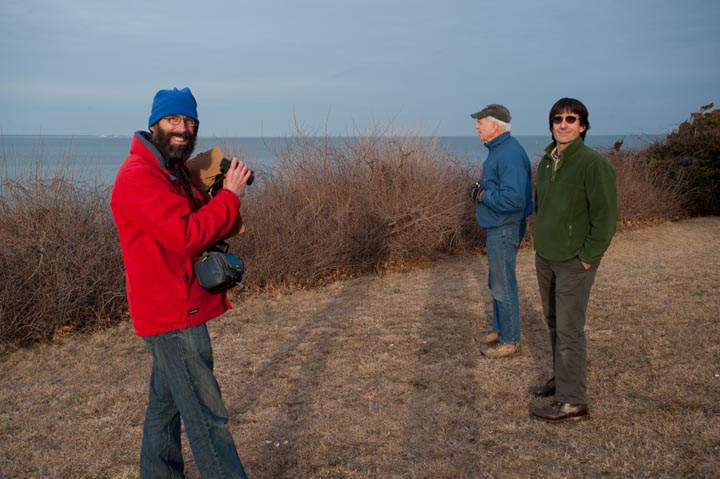
“When they think of crows, a lot of people [mistakenly] think of the Alfred Hitchcock movie [The Birds],” he said. “When Europeans first came here, carrier pigeons were the most numerous bird. They flew overhead in flocks by the billions. They could darken the sky for hours. There is nothing like that anymore. If we see a congregation of birds, maybe we see them in the thousands.”
According to some long-time observers, crows are smart. They have a complex social system and seem to learn from their siblings and their parents. Their choice of where specifically to roost is no accident, but is learned. “They communicate with each other. They are communal. Their behavior is fascinating,” said Suzan Bellincampi, director of Felix Neck Wildlife Sanctuary.
“What is really intriguing is the accessibility of this winter roosting behavior,” Ms. Bellincampi said. “Anyone can watch this. This is not a secret species hiding under certain rocks. Anyone can go out and watch these birds as they fly in.”

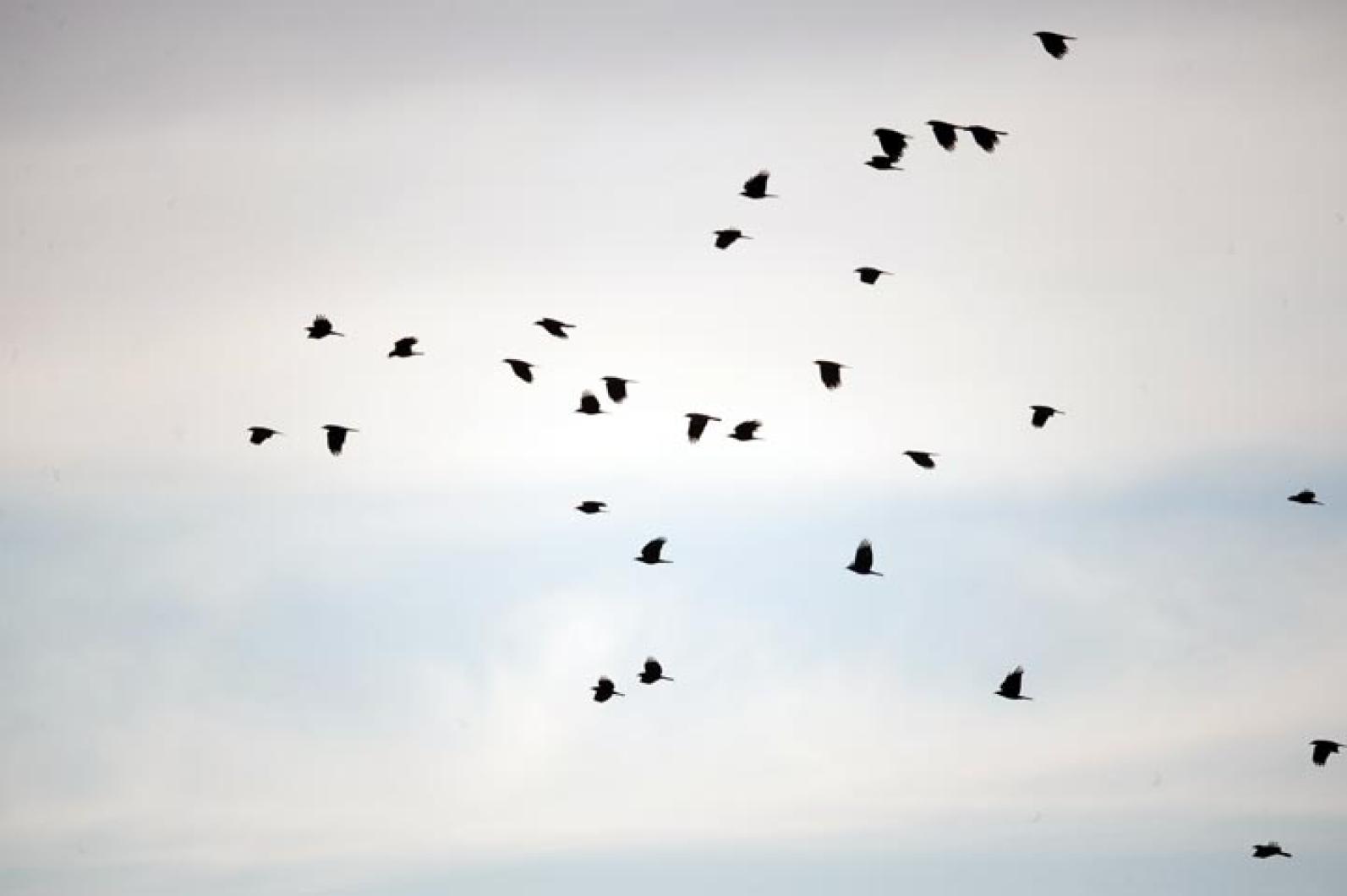
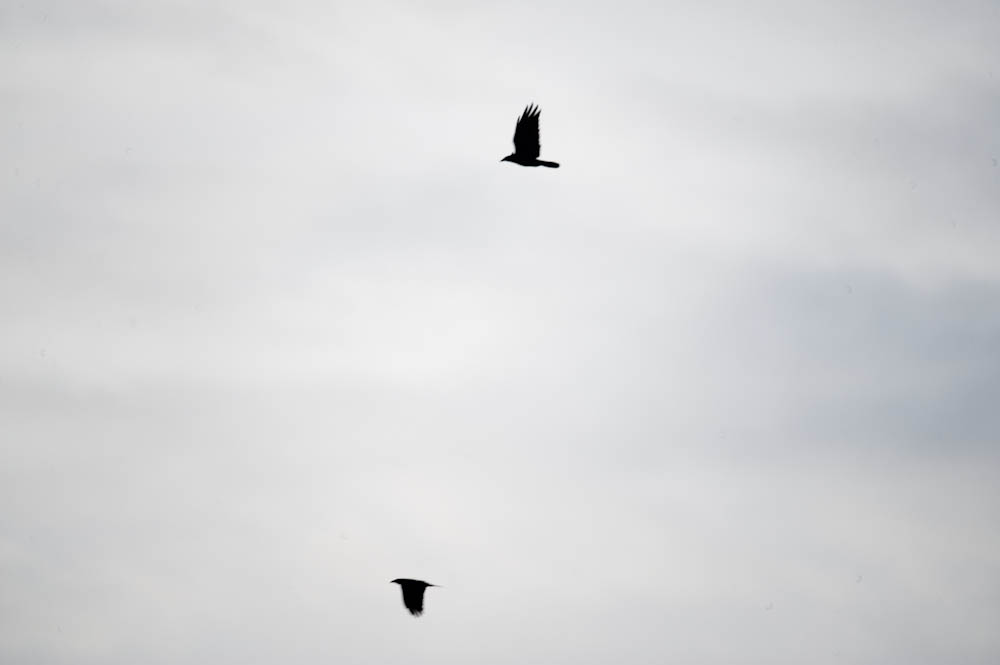
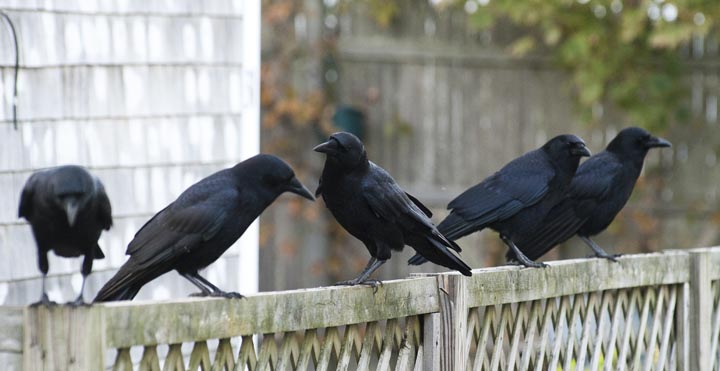


Comments (2)
Comments
Comment policy »